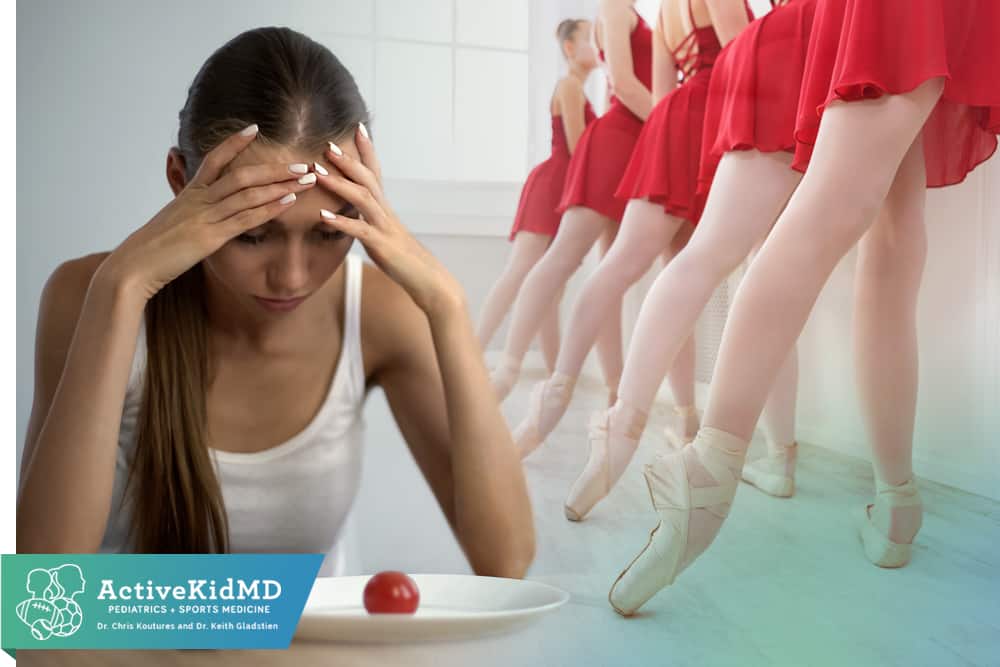Eating disorders are one of the biggest risks faced by dancers, particularly women. The focus on size, shape and weight can put extreme pressures on dancers. The aesthetic standards of the dance world favor lean physiques – from body revealing costumes and clothing to the demands of jumping, leaping, and partnering. Every day in the studio, a dancer is bombarded by direct comparisons with fellow performers in a competitive environment with occasional added subtle, or not so subtle comments (“you’d jump better if you were 5 pounds lighter”). Some of these environments can lead young people into destructive eating habits which may have long-term and even fatal consequences.
Dance instructors should always be careful when talking about body size and weight. What is said could be misunderstood or taken to extremes. Teachers of young dancers have a responsibility to be aware of the signs that might indicate problems, and to take steps towards early intervention.

In some ways, the decisions behind these disorders give a dancer a sense of control in an environment where there are constant uncertainties about being selected for a troupe, cast for a particular role, having to wear certain costumes, or being able to meet the demands of the choreographer.
With initial weight loss, many dancers gain a boost of confidence with increased jumping and turning abilities. They often may hear approval and confirmation from colleagues and instructors. This definitely makes acknowledging early issues with energy intake more difficult, and often medical care is sought only when there is a later significant decrease in performance.
Issues with body self-image and food can also be connected with emotional issues such as anxiety or depression. Unique dance stressors such as a constant need to learn new routines combined with frequent sources of critique (instructors, earning a role, placing in a competition) can increase risk for many mental health concerns, including anorexia and bulimia.
Thank you to BackStageSoCal for helping us bring this important subject matter to the forefront (see athlete eating disorder how to identify and get help).
Instructors that suspect a student may have an eating disorder should recommend an urgent medical evaluation with professionals who are familiar with eating issues in the dance world. Treatment may involve a combination of medical monitoring, dietary counselling and psychological help.
One helpful thing about dancers is that they are used to working with multiple team members, from fellow dancers to multiple choreographers and instructors. Thus, once they understand that optimal treatment of their eating disorder requires an inter-disciplinary approach including physicians, nutritionists, and mental health providers, a dancer is more apt to accept this team-based treatment approach.
Dancers are used to tight, goal-oriented schedules, so setting short-term realistic goals definitely help in building confidence and compliance. Regular visits to modify goals and constant communication amongst providers (with appropriate privacy safeguards, of course) are also quite helpful.
Dancers in general will be more receptive to working with medical professionals that know the culture of the dance world and the expectations/demands. When an apprehensive dancer hears that he/she is not the first to seek treatment with a medical provider who has helped others get healthy, that dancer will feel less isolation and have more confidence in a treatment plan.


